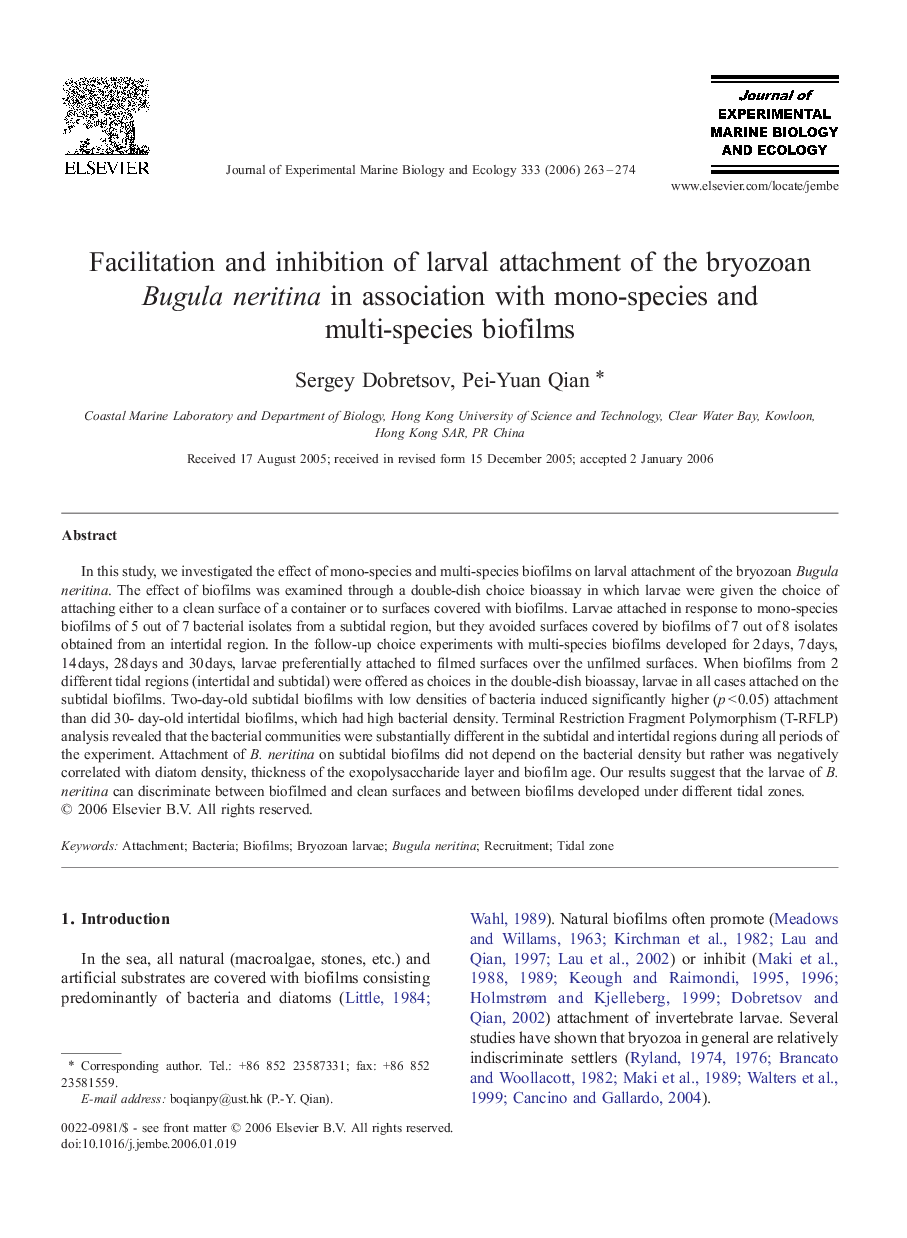| Article ID | Journal | Published Year | Pages | File Type |
|---|---|---|---|---|
| 4398120 | Journal of Experimental Marine Biology and Ecology | 2006 | 12 Pages |
In this study, we investigated the effect of mono-species and multi-species biofilms on larval attachment of the bryozoan Bugula neritina. The effect of biofilms was examined through a double-dish choice bioassay in which larvae were given the choice of attaching either to a clean surface of a container or to surfaces covered with biofilms. Larvae attached in response to mono-species biofilms of 5 out of 7 bacterial isolates from a subtidal region, but they avoided surfaces covered by biofilms of 7 out of 8 isolates obtained from an intertidal region. In the follow-up choice experiments with multi-species biofilms developed for 2 days, 7 days, 14 days, 28 days and 30 days, larvae preferentially attached to filmed surfaces over the unfilmed surfaces. When biofilms from 2 different tidal regions (intertidal and subtidal) were offered as choices in the double-dish bioassay, larvae in all cases attached on the subtidal biofilms. Two-day-old subtidal biofilms with low densities of bacteria induced significantly higher (p < 0.05) attachment than did 30- day-old intertidal biofilms, which had high bacterial density. Terminal Restriction Fragment Polymorphism (T-RFLP) analysis revealed that the bacterial communities were substantially different in the subtidal and intertidal regions during all periods of the experiment. Attachment of B. neritina on subtidal biofilms did not depend on the bacterial density but rather was negatively correlated with diatom density, thickness of the exopolysaccharide layer and biofilm age. Our results suggest that the larvae of B. neritina can discriminate between biofilmed and clean surfaces and between biofilms developed under different tidal zones.
